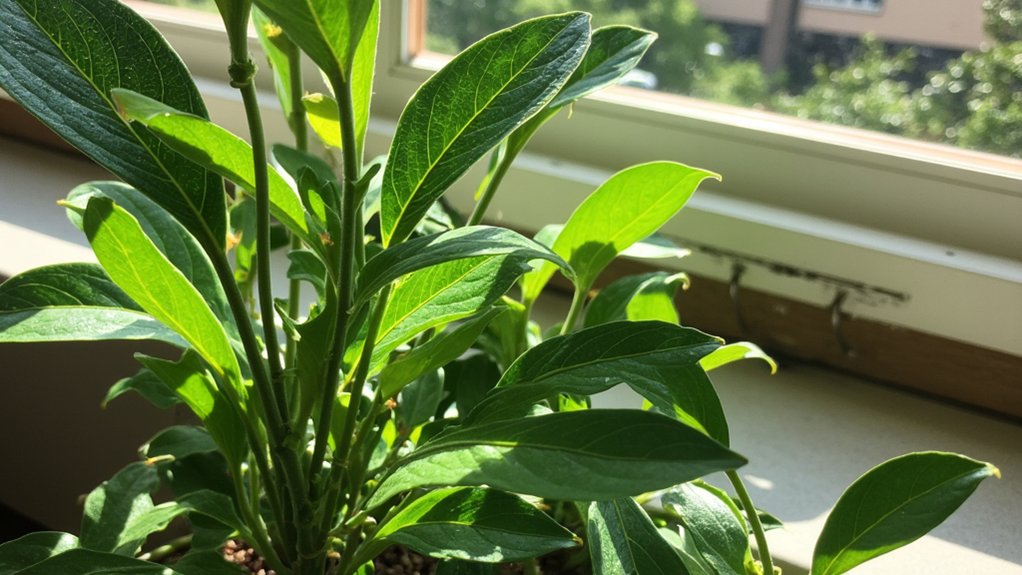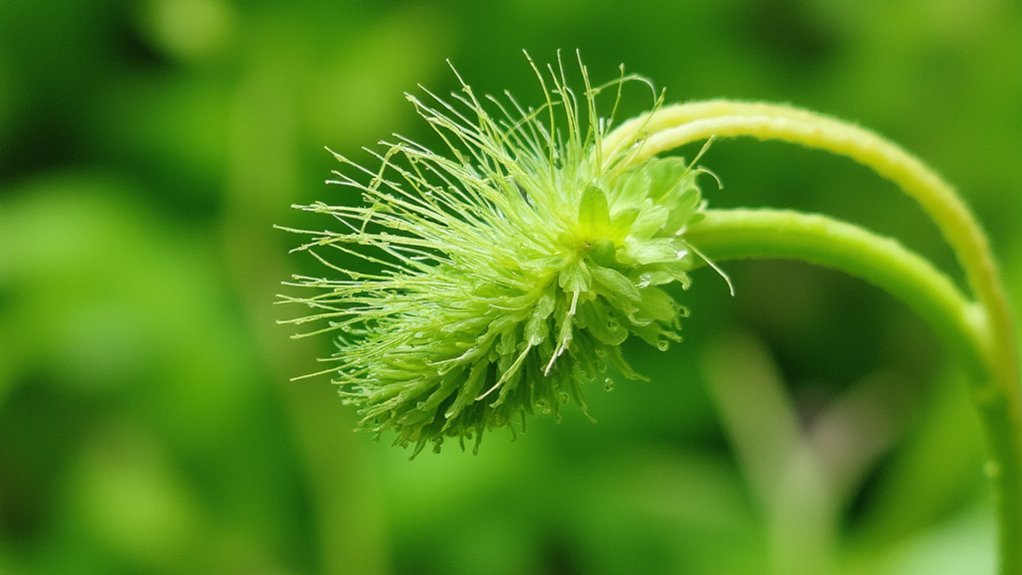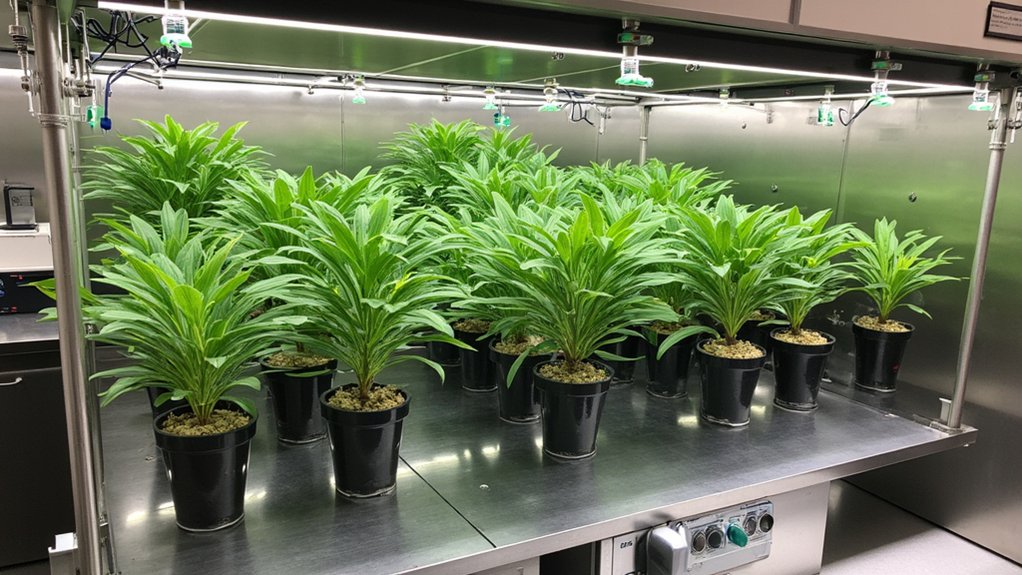You’ve probably wondered if your houseplants know when you’re caring for them versus when a friend stops by to water them. Recent scientific studies suggest they actually might, through sophisticated cellular networks that create electrical signals and chemical responses. While plants don’t have brains like humans do, they’ve developed complex systems to recognize and remember consistent interactions with their environment. The evidence behind this plant-human connection reveals some surprising capabilities that challenge our understanding of plant intelligence.
Contents
- 1 The Science Behind Plant Perception
- 2 Understanding Plant Memory and Response Mechanisms
- 3 Research Methods in Plant-Human Interaction Studies
- 4 Evidence of Plant Recognition Patterns
- 5 Chemical and Cellular Changes in Responsive Plants
- 6 Real-World Applications and Gardening Implications
- 7 Future Directions in Plant Intelligence Research
The Science Behind Plant Perception

While many people dismiss the idea that plants can recognize their owners, scientific research has revealed fascinating mechanisms behind plant perception. You’ll find that plants possess specialized cells that detect changes in light, touch, and chemical signals through a process called mechanosensing.
Your plants actually respond to environmental stimuli through electrical impulses, similar to your nervous system. They’ve got calcium-based signaling networks that help them process and remember interactions. When you touch or care for your plants, they’re recording these encounters through chemical changes in their cellular structure.
These memory-like responses allow plants to adapt their growth patterns and defense mechanisms based on past experiences.
Understanding Plant Memory and Response Mechanisms

Because plants lack a central nervous system, they’ve developed sophisticated cellular mechanisms to process and store information about their environment. Their cells use calcium waves and electrical signals to communicate, similar to how your neurons fire.
When you regularly interact with a plant, it creates biochemical memories through changes in gene expression and protein production. These memories help plants recognize and respond to familiar stimuli, like your touch or voice patterns. They’ll adjust their growth patterns, metabolic processes, and defense mechanisms accordingly.
Your plant’s memory system relies on specialized proteins, hormones, and DNA modifications that can persist for weeks or even months.
Research Methods in Plant-Human Interaction Studies

Scientists employ multiple research methodologies to study how plants interact with their human caregivers. You’ll find researchers using growth-tracking sensors, time-lapse photography, and bioelectric monitoring devices to measure plants’ responses to different people.
In controlled experiments, you’ll see scientists testing variables like touch frequency, voice exposure, and caregiver consistency. They’ll often divide plants into control and experimental groups, tracking metrics such as growth rate, leaf orientation, and chemical changes over 4-8 week periods.
To guarantee accuracy, they’ll use standardized care protocols and sophisticated measurement tools like infrared sensors that can detect minute plant movements within 0.1 millimeters.
Evidence of Plant Recognition Patterns
Research findings suggest that plants can distinguish between their primary caregivers and strangers through subtle chemical, physical, and electromagnetic signals. You’ll notice this recognition particularly in house plants that receive regular attention from a specific person.
When you consistently care for a plant, it develops a unique response pattern to your presence. Studies show that plants react differently to their owner’s touch, releasing specific growth hormones and adjusting their leaf positions. They’ll even respond to your voice’s vibrations at 70-120 Hz frequencies, demonstrating measurable changes in their electrical conductivity within 15-20 minutes of interaction.
Chemical and Cellular Changes in Responsive Plants
While interacting with their owners, plants undergo fascinating cellular transformations that alter their biological chemistry. When you speak to or touch your plants, you’ll trigger rapid changes in their calcium ion concentrations, often within 30 seconds of contact.
Your presence stimulates the production of specific proteins and hormones, particularly oxytocin-like compounds. These molecules help your plant develop what scientists call “cellular memory patterns,” which activate whenever you’re nearby.
You’ll find that responsive plants adjust their growth hormones, particularly auxins and cytokinins, creating measurable differences in cellular activities between interactions with owners versus strangers.
Real-World Applications and Gardening Implications
Understanding your plant’s recognition capabilities can revolutionize your gardening practices and boost growth results. By maintaining consistent care routines, you’ll help your plants develop stronger cellular memories and responses. Try to water and fertilize at the same times each day, using identical patterns of movement.
You can test your plant’s recognition response by measuring leaf angles and growth rates. If you’re working with touch-sensitive plants like Mimosa pudica, track their reaction times to your touch versus a stranger’s. They’ll typically respond 20% faster to familiar handlers after two weeks of consistent care.
Future Directions in Plant Intelligence Research
The fascinating discoveries about plant recognition open up endless possibilities for future scientific exploration. You’ll likely see researchers developing more sophisticated tools to measure electrical signals, hormonal changes, and chemical responses in plants during human interactions.
Scientists are currently exploring ways to decode plant “languages” through artificial intelligence and advanced sensors. You can expect breakthroughs in understanding how plants process information and store memories at the cellular level.
The next decade might bring practical applications, like plants that can serve as environmental monitors or biosensors. We’ll need to develop standardized protocols for testing plant intelligence and recognition capabilities across different species.
